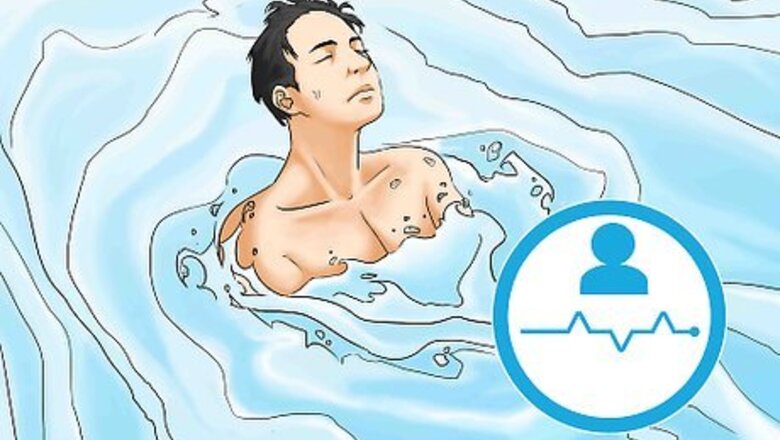
views
Reacting if You’re Caught in a Rip Current
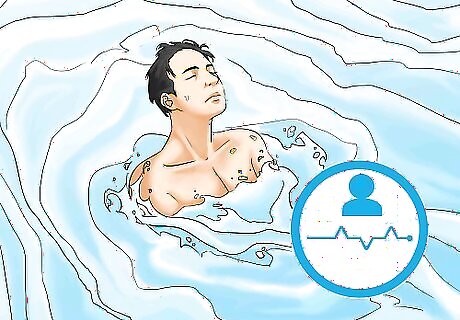
Remain calm. If you get caught in a rip current, don't panic. You'll have a better shot at getting out of the situation if you stay calm. Keeping your cool can help you conserve energy and think clearly. Tips for Staying Calm Try to control your breathing. Keep your head above the water and take slow, deep breaths. Think positive, calming thoughts. Tell yourself “Don’t panic. You can make it out of this rip current. Don’t fight it, conserve your energy, and look for breaking waves at the edge of the current.” Remind yourself that a rip current does not drag you underwater. Rip currents only pull you away from the shore. Worrying that the current will pull you underwater could lead to panic.
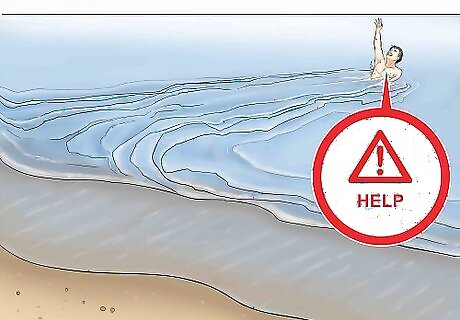
Call for help if you’re not a strong swimmer. Escape involves floating with the current, then swimming parallel to the shore to cross the current's edge. If you can’t swim, call for help and wave your arms to get the attention of a lifeguard or other people on the beach. If you know how to swim, you should be able to escape and swim back to shore at an angle away from the current. However, if you have any doubt about your ability to break free of the current, call and wave for help.
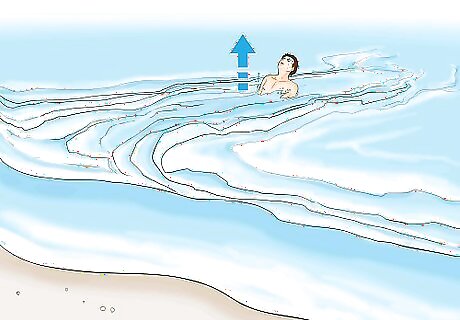
Float or tread water until you can swim out of the current. Your instincts may be to fight the current and swim directly back to shore. However, that’s the most dangerous thing you could do. Instead, focus on keeping your head above water until the current has weakened and you're able to swim through its boundary. Most rip currents weaken about 50 to 100 yards (46 to 91 m) from shore. Once the current has begun to subside, you’ll have an easier time swimming out of it. Even the strongest swimmers can’t fight a rip current. Trying to swim against it can lead to exhaustion and drowning.
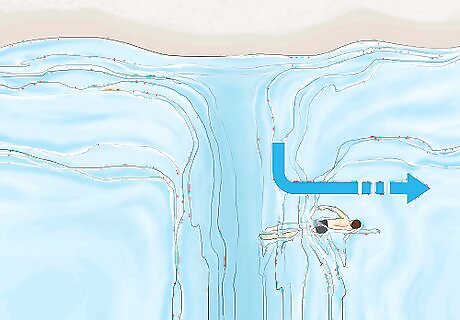
Swim parallel to shore to escape the current. Most rip currents are between 30 and 100 feet (9.1 and 30.5 m) wide. Look for the nearest breaking waves; they indicate the current’s edge. Swim toward the waves, and be sure to move parallel to the shore instead of directly towards it. Swimming Parallel to Shore vs. Floating Free Some researchers advise against swimming parallel to shore. Instead, they recommend simply floating to the end of the current, which may take about 3 minutes. Swimming parallel to shore is the official recommendation. As of 2018, NOAA and the U.S. Lifesaving Association continue to urge swimmers to swim parallel to shore. Key takeaways: If you're not a strong swimmer, call for help. If you can swim, paddle parallel to shore, but avoid exhausting yourself. If you're not making progress, save energy and float until the current weakens or rescue arrives.

Swim diagonally to the shore after you're out of the current. Once you are out of the current, make your way back to shore at an angle away from the current. Swimming diagonally away from the rip current minimizes the chance that you'll reenter it. Rip currents often form around jetties and other structures perpendicular (at a 90-degree angle) to the beach. If you are near one of these structures, swim away from it. If necessary, stop and float periodically to rest. If you’re exhausted and can’t swim any further, call for help and wave your arms.
Spotting a Rip Current
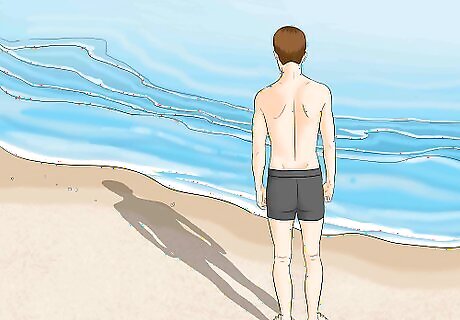
Try to spot areas to avoid before going in the water. Checking for signs of a rip current can help you avoid getting caught in one in the first place. Just keep in mind it's not always possible to identify a rip current, so use caution even if you don't see any warning signs. Signs of a rip current are subtle and aren't always present. A rip current could also form while you're already in the water.
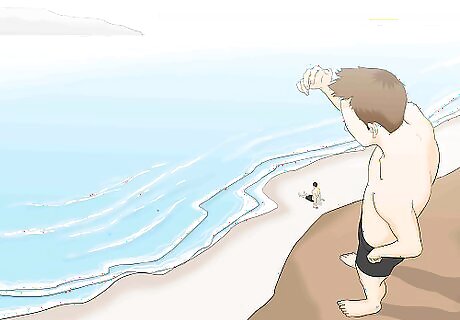
Check the shoreline from an elevated position. When you first get to the beach, look at the area where the waves meet the sand. A high spot, like a dune or boardwalk, offers the best vantage point. It’s easier to spot a rip current from an elevated position than at eye level. Polarized sunglasses can help make it easier to spot warning signs of a rip current. Without the sun's glare, you might have an easier time recognizing signs such as a gap in wave patterns or debris being carried out to sea.
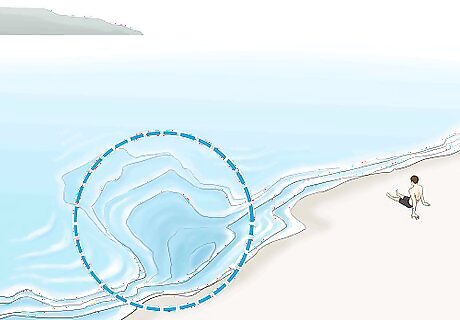
Look for gaps in the incoming wave patterns. Check for areas that don’t have white foam or don’t seem to have any breaking waves. Note that you’re not looking for gaps between a wave and the one behind it. Gaps that indicate rip currents are within the horizontal wave line itself. Try searching online for images of rip currents. They’re tough to spot, but a good indicator is a gap in the wave pattern.
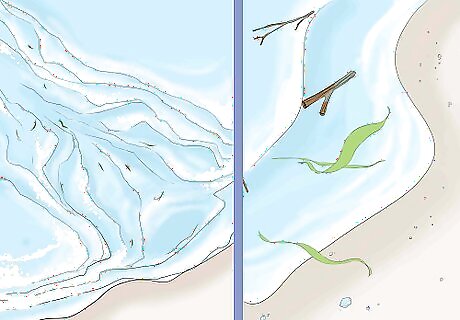
Spot any foam or seaweed being carried away from the shore. Usually, waves carry foam, seaweed, and other debris toward the sand. Look for a channel of objects steadily traveling out to sea instead of bobbing up and down or moving toward the shore. It may look a bit like a river within the ocean flowing away from the shore. Additionally, the water within a rip current may be slightly discolored. This is due to the sediments picked up by the current.

Avoid any areas where you suspect a rip current has formed. Don’t go in the water in the area where you’ve spotted signs of a rip current. Tell the nearest lifeguard; they’ll likely already be aware, but it’s helpful to check in with them just in case. Ask them about the beach forecast and if there are any warnings or alerts about hazardous conditions. Keep your guard up even if you don’t see any signs of a rip current. They’re difficult to spot, and a rip current may be present even if you don’t see any indicators.
Practicing Beach Safety
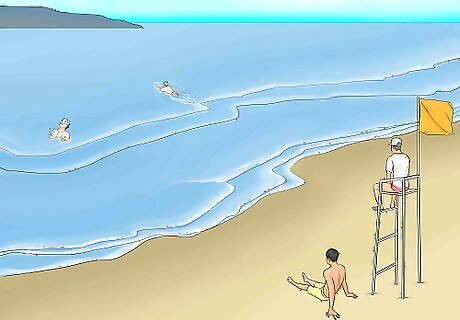
Swim only when a lifeguard is on duty. Avoid swimming alone, and stick to guarded beaches. Additionally, go swimming in the water in front of a lifeguard stand, especially if there are any alerts about possible rip currents or other hazardous conditions. Swim near a lifeguard stand, but remember not to set up your blanket or chairs in front of the stand. The lifeguard will need a clear path to the water if they have to make a rescue. If you do go swimming on an unguarded beach, avoid going in deeper than your waist. It's also best to bring a floatation device into the water with you.
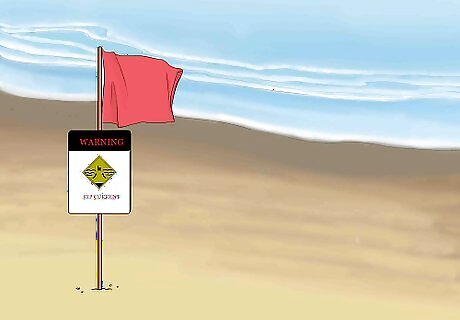
Check your local beach forecast before going in the water. When you get to the beach, look for flags or signs that indicate potentially dangerous ocean conditions. If you see a flag and aren’t sure what it means, ask a lifeguard. If you live in the United States, check your local beach forecast at https://www.weather.gov/safety/ripcurrent-forecasts.
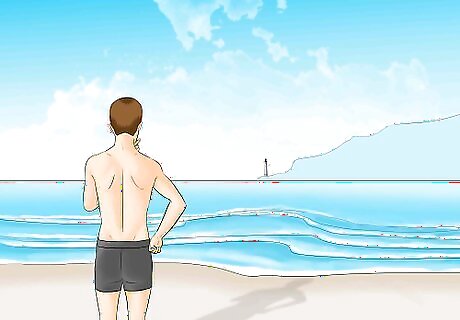
Use caution even if the weather is nice. While strong winds can make waves choppier, rip currents aren’t directly caused by the weather and can form even in calm conditions. Key factors include the shape of the ocean bottom, sandbars, and structures such as jetties, rocks, and piers. Rip currents can form at any time, but they’re more likely to develop at low tide.
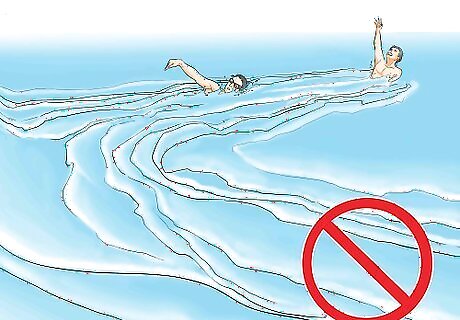
Don’t try to rescue someone caught in a rip current. Only a lifeguard or other trained emergency responder should attempt a rescue. If there is no lifeguard present, call emergency services and yell out instructions to the person caught in the current. Yell to them “Stay calm! Don’t try to fight the current. Swim parallel to shore to get out of it.” Try to find an object that floats and, if possible, throw it to the person caught in the current. If you don't have rescue equipment, such as a life jacket or ring buoy, a surfboard, boogie board, cooler, or foam noodle could work as improvised floatation devices.




















Comments
0 comment